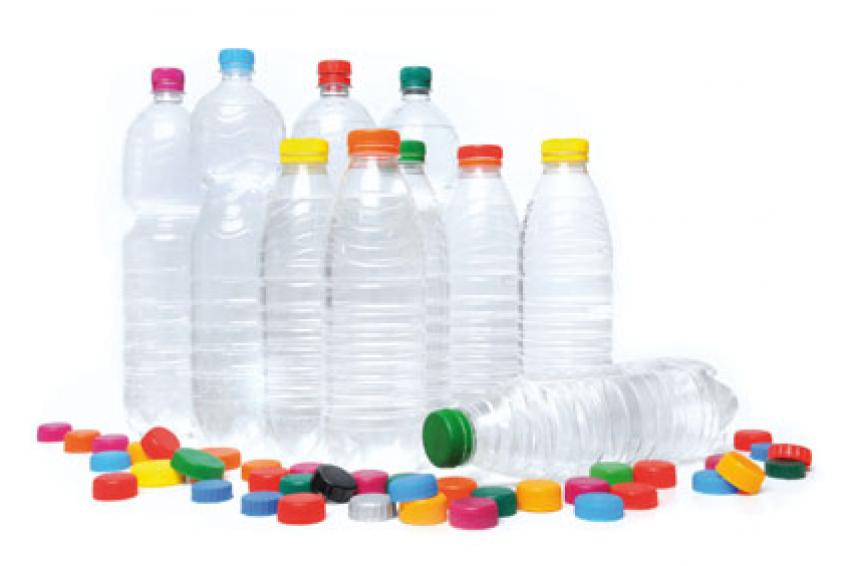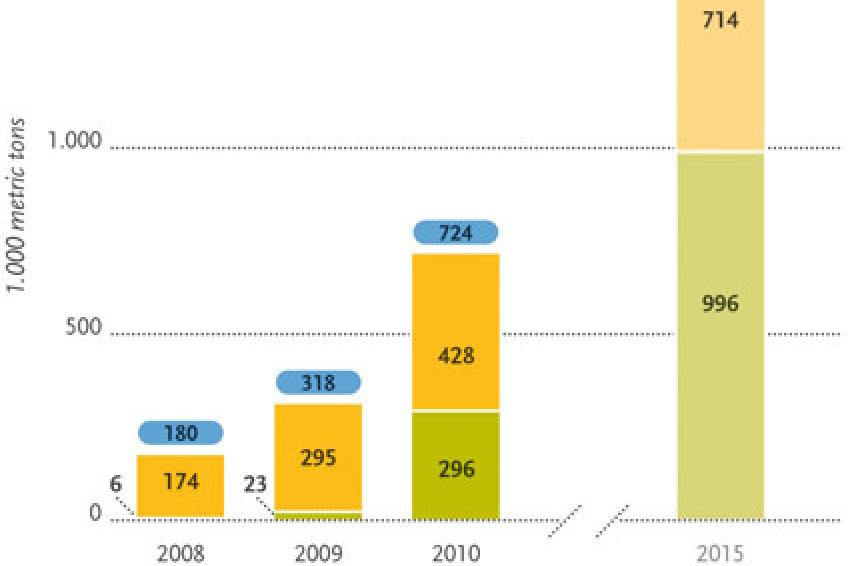EU-Policy: Bioplastics in The Bio-Economy
Ongoing Commercialization and Strong Political Support
Rough Road Ahead - The climate is changing and competition around the world is increasing - Europe is in for some severe challenges. Concepts such as the bio-economy, focus on strengthening European competences to gain a leading position in e.g. research and development. Bioplastics are an important pillar of the bio-economy and a fast growing market with high value creation.
If supported by the political framework, they can contribute to meet the challenges of climate change and secure European economies' global top-position.
European economies are confronted by several challenges at the start of the 21st century. In the face of increasing competition from around the world, prosperity, growth and employment have to be secured over the long term. At the same time, solutions must be found for urgent environmental problems such as climate change. The increasing scarcity of crude oil and other finite fossil raw materials calls for additional innovation efforts.
One way to meet these challenges is to strongly support the development of industry products that utilize renewable resources and to introduce them to the European and global market. The European Union takes account of this approach in its concept of the bio-economy. This concept includes supportive policies for a range of industry sectors working with renewable resources.
The Bioplastics Industry in Europe and Beyond
Bioplastics are an important pillar of the concept of bio-economy. A lot more materials on the basis of renewable resources than are commonly known are already available today. Bioplastics are part of the successful family of plastic materials. They drive the evolution of plastics with an eye on the environmental and economical challenges outlined.
According to European Bioplastics, bioplastics are bio-based, biodegradable or both. Bioplastics are not a single kind of polymer but rather a family of materials that can vary considerably from one another.
These include three main groups:
- Bio-based or partly bio-based durable polymers such as PE, PET, and soon, PVC and PP (so-called drop-in solutions)
- New polymers that are bio-based and biodegradable, including PLA and PHA, and
- New polymers that are based on fossil resources and are biodegradable, such as, e.g., PBAT or PBS.
Up to now, bioplastics still represent well under 1% of the annually produced global plastics volume of about 250 million tons. However, with an annual growth rate of around 20 percent, this share is to become more significant in the mid- to long-term (fig. 1).
Bioplastics have long been used to manufacture a broad variety of short-lived materials and products, such as mulch films, catering products, packaging and waste bags. As technology develops, more and more durable applications such as keyboard elements, mobile phone covers or certain components in cars are manufactured in larger quantities.
European Policy And Bioplastics
Europe offers great conditions for the market development of bioplastics. :
- A highly developed economy and educated society
- Leading global companies in the chemical and plastics industries
- Industrial users focusing on sustainable development
- Consumers with a high degree of environmental awareness (high consumer acceptance for bioplastics)
The political and economical framework plays a central role in the market penetration of bioplastic products. For this reason, the EU Commission has intensively taken on the subject of bio-based products in the course of the Lead Markets Initiative. During this process, bio-based plastics were identified as one of the most important markets for potential growth (figs. 2-3).
However, concrete political support is urgently needed, as a current trend becomes more and more visible that is well known from other innovative industry sectors: The EU remains one of the main target markets for bioplastic consumer goods. R&D work is happening in the U.S. and the EU. Commercial scale production, however, is build outside the EU - in Southeast Asia.
U.S. And Asia Ahead?
The exceptional opportunities of the bio-based economy are well-known throughout the world. Legislators in the U.S. and multiple Asian countries have already developed and implemented programmes to support the industrial usage of renewable resources.
The U.S., for example, launched a public procurement program for bio-based products in 2002, the U.S Department of Agriculture's Biopreferred program.
Measures of EU member states, in comparison, have been selective and never reached full implementation, as an integrative political vision on EU level was missing up to now. But in 2010, the EU commission drafted the new strategy Europe 2020 to meet upcoming economical and ecological obstacles.
European Bioplastics calls for the explicit inclusion of bio-based plastics in this innovation strategy and in the EU's renewable targets for 2020 and 2030. This is a necessary and overdue step on Europe's part if a carbon-efficient closed loop economy is to become reality.
A set of supportive political measures is needed to get there.
Possible Supportive Measures
Market introduction of bioplastics products can be facilitated via several ways:
- The European Union and the EU member states have to check how the market introduction of bio-based plastics can be supported through direct and indirect fiscal measures. European Bioplastics proposes the evaluation of tax deductions for R&D activities, as well as a reduced
- VAT rate for products made of bio-based plastics.
Furthermore, EU and industry have to inform the public about the benefits of bioplastics through public-private information campaigns and standardised product labels as well as via supportive marketing. - The EU should put bio-based and recycled plastic content at equal level in all measures promoting the increase of plastic recycling and use of recyclates.
- The recovery and recycling of bio-based plastics in use cascades needs to be facilitated. Bio-based plastic should be allowed to enter all waste collection and recovery systems, including mechanical recycling and energetic recovery. Products certified compostable according to EN 13432 should gain unhindered access to organic recycling.
- With regard to product legislation, flagship products should be selected. An example would be to impose a levy on plastic bags and exempt bio-based and compostable plastics to drive the bioplastics industry and support waste reduction targets.
Last but not least, it would be a decisive move to encourage green public procurement for bio-based plastics products within the EU.
All in all, European Bioplastics is striving for a political landscape that helps the bioplastics industry to live up to its potential as a central element of the European bio-economy.
Contact
European Bioplastics e.V.
Marienstr. 19-20
10117 Berlin
Germany
+49 30 28482 350
+49 30 28482 359








